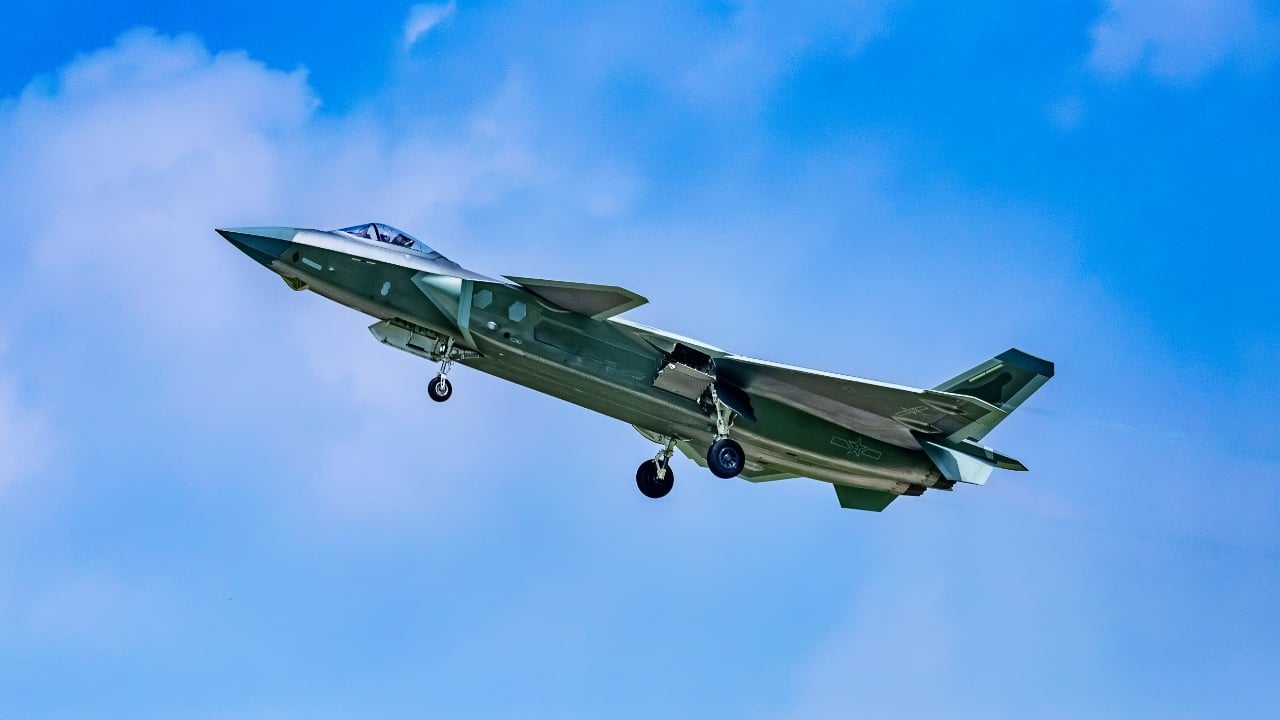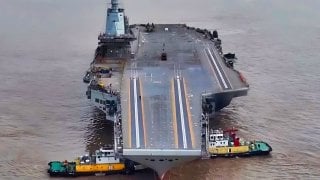Taiwan Thinks China Can’t Invade. They’ve Never Been More Wrong
Taiwan is underestimating the imminent threat of a Chinese invasion, potentially occurring before 2027. China's extensive fleet of civilian roll-on/roll-off ferries, built to military specifications, could quickly augment its amphibious capabilities.
4 Key Points: Taiwan is underestimating the imminent threat of a Chinese invasion, potentially occurring before 2027.

-China's extensive fleet of civilian roll-on/roll-off ferries, built to military specifications, could quickly augment its amphibious capabilities.
-With the U.S. military overstretched and distracted by internal and external crises, Taiwan cannot rely on immediate American intervention.
-Taiwan must prepare for a protracted insurgency and adapt its defense strategies accordingly.
Why Taiwan Might Face a Chinese Invasion Sooner Than You Think
Taiwan’s wishful thinking continues unabated. A recent report conducted by the Taiwanese Defense Ministry asserts that the Chinese People’s Liberation Army (PLA), while it has made significant strides in its modernization push, is still unable to conquer Taiwan in an amphibious invasion, at least not for another few years. Indeed, this flowery report gels nicely with the long-running contention of the Pentagon that China will not be able to successfully invade Taiwan until at least 2027.
Conveniently, that is the year that the Pentagon believes that its forces will be able to better deter China. But Beijing knows that American military capabilities if trends persist, will be shored up by 2027. And who knows how much more stable and prosperous the United States might be by then.
Compare That to Now
America’s economy is a turgid mess, its political order is crumbling, its social fabric is tearing, and there is a very real fear that the United States might devolve into some sort of civil war, in a limited sense, in the aftermath of whoever wins the 2024 presidential election.
On the international front, the U.S. military is stretched and strained to its breaking point. The Ukraine War has drained whatever stores of critical armaments for the military and the U.S. defense industrial base is in shambles.
This is at a time when the Americans are not only contending with a raging, nuclear-armed Russia, but they are dealing with the unraveling crisis in the Middle East. In this context, then, China has never had a greater opportunity to attempt major military action against their democratic neighbor, whom they view as little more than a rebellious, breakaway province.
The Hammer Will Drop On Taiwan Sooner Than 2027
I’ll tell you that which I just finished telling the folks at McConnell Air Force Base in Wichita, Kansas: be prepared for China to move decisively against Taiwan far sooner than 2027. What’s more, do not just assume China will conduct a massive amphibious operation against the island nation.
There is a far greater chance that Beijing will first seek to blockade the island and strangle it, slowly, while keeping the Americans just over the horizon.
Just look at the moves China has been making at the strategic level. Right now, China controls the South China Sea (SCS) and the U.S. Navy is either unable and/or unwilling to do much of anything about it. China is seriously challenging Japan for dominance in the East China Sea.
Meanwhile, as if anticipating that soon the First Island Chain, the line of territory that runs from Japan through Taiwan down to the SCS, will fall, the Chinese have intensified their diplomatic and intelligence operations in the Second Island Chain.
All the while Russia has joined China in the largest naval exercises the two powers have conducted together since the height of the Cold War in the Sea of Japan, a clear challenge to Japan, the only regional power that China fears.
China is getting ready to do something very big against Taiwan far sooner than 2027. Oh, and let’s just look at the prospects of an invasion scenario a bit closer. The rosy Taiwanese report fixates heavily on the oft-cited, though rarely backed-up argument that China’s amphibious landing force is numerically inferior and, therefore, will not be able to conduct an invasion of Taiwan until more units are built, which would take several years.
Taiwan Doesn’t Get It
Taipei’s strategists either don’t know or don’t care about the fact that China owns the largest fleet of civilian roll-on-roll-off (Ro-Ro) ferries in the world. These ferries, unlike those elsewhere in the world, have all been built to military specifications. In other words, they can easily be converted into amphibious assault ships, thereby augmenting China’s fleet of amphibious landers. And they can be ready now.
Everyone keeps saying that an invasion scenario of Taiwan is a near-impossibility. Are they saying this because they don’t want to have to deal with the painful reality that the U.S. and their allies, once the pinnacle of military might in the world, are about to get rocked by a Chinese military that has often been dismissed as little more than a joke?
This sounds more like the bureaucratic equivalent of massive coping. Should Chinese forces make it onto the island, they will likely be able to claim the entire western portion before running into any real problems, and those problems would likely be borne out of terrain issues they’ll hit mountains rather than resistance issues.
Taiwan’s military, after all, is not ready to resist a Chinese invasion in the long run. They expect the Americans to come rushing in after a week or two. But, as noted above, the Americans right now are far too distracted and busy to do that.
Further, even if they did want to go guns blazing against a Chinese invasion, China’s massive anti-access/area-denial (A2/AD) arsenals in the region could theoretically prevent the U.S. from effectively projecting requisite levels of military power against any Chinese invasion force. So, without immediate U.S. military support, what will the weaker Taiwanese military do?
A Better Solution for Taiwan
A better solution would be for Taiwan to prepare its people for a Chinese invasion at any point between now and 2027, and to stop trying to emulate the structure and practices of the U.S. military. Instead, Taipei must prepare for a protracted national insurgency against the Chinese invaders.

They’re not. It’s as politically untenable in Taiwan as sending a bloated U.S. force to fight, and die, for Taiwan would be for any U.S. politician faced with the prospects of a Chinese conquest of Taiwan.
Before you write this off as just fearmongering, remember that Taiwan has been invaded and conquered before. What’s more, it’s been taken by a technologically inferior, though numerically superior, Chinese force under the pirate Koxinga in the 1649 Sino-Dutch War. Koxinga’s forces invaded the western part of the island along a similar path that the PLA would follow today. Chinese forces defeated the technologically superior Dutch East India Company’s forces and kicked them off the island.
The same thing is likely to happen unless radical changes and thinking are embraced by the defenders.
Author Experience and Expertise: Brandon J. Weichert
Brandon J. Weichert, a National Interest national security analyst, is a former Congressional staffer and geopolitical analyst who is a contributor at The Washington Times, the Asia Times, and The-Pipeline. He is the author of Winning Space: How America Remains a Superpower, Biohacked: China’s Race to Control Life, and The Shadow War: Iran’s Quest for Supremacy. His next book, A Disaster of Our Own Making: How the West Lost Ukraine, is due October 22 from Encounter Books. Weichert can be followed via Twitter @WeTheBrandon.
All images are Creative Commons or Shutterstock.
From the Vault
Russia Freaked Out: Why the U.S. Navy 'Unretired' the Iowa-Class Battleships
Battleship vs. Battlecruiser: Iowa-Class vs. Russia's Kirov-Class (Who Wins?)


